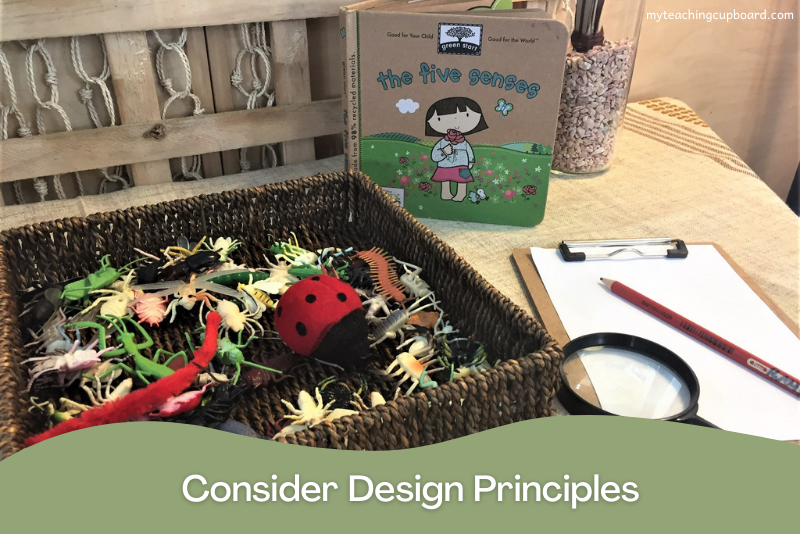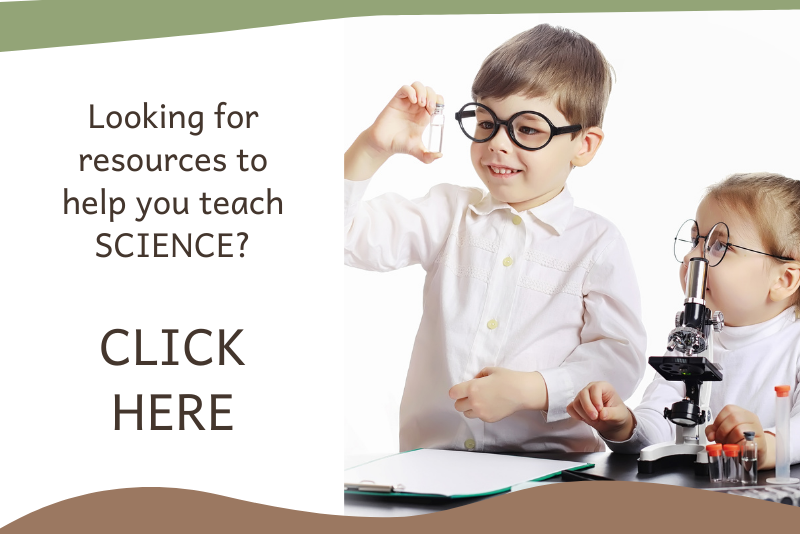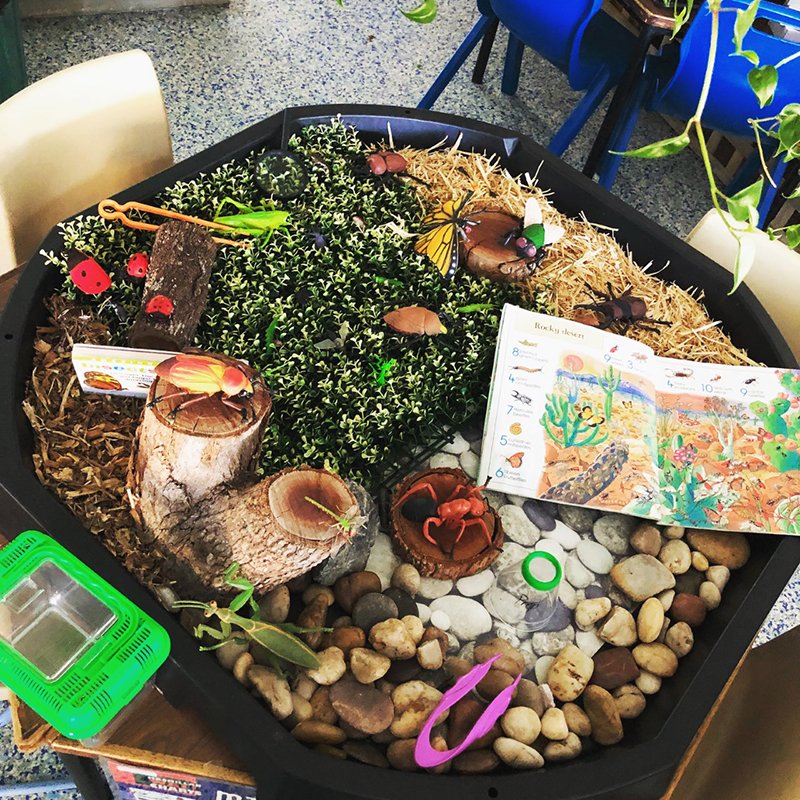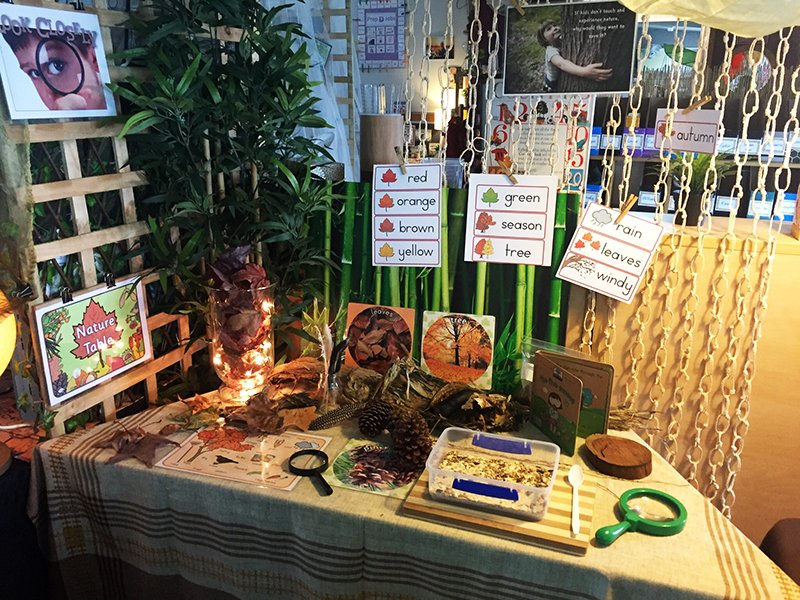Science Provocations – Living Things
Are you teaching the early years biology strand and looking for some engaging and educational science provocations to help you teach about Living Things?
In this blog post there are 5 living things provocations to inspire you. There are also tips and ideas to help you set up your very own purposeful early childhood science learning provocations.
What is a Science Learning Provocation?
A science learning provocation is a hands-on learning invitation. It is intentionally set up in your classroom to "provoke" scientific thinking and learning.
A science learning provocation should invite your children to explore and investigate concepts and ideas related to your science curriculum learning intentions.
Effective science provocations are purposefully designed by the teacher. They usually have your science curriculum learning intentions in mind.
The science curriculum is not the only thing you need to consider when setting up purposeful learning invitations. Your children’s interests also need to be considered.
To set up an intentional living things investigation area, you will need to have a comprehensive understanding of two things.
the curriculum
your children
If you would like some clarification on the ACARA science curriculum and how to teach it effectively though play based and inquiry learning, you might like to read this blog post: Teaching Science in Early Childhood
In this blog post you will discover how to effectively teach the Science curriculum and all the science learning intentions in a play based classroom.
Setting up a Science Provocation
Setting up your science provocations can be as simple or as elaborate as you like. Follow these 3 easy steps if you would like to set up purposeful science learning provocations in your classroom.
Choose a space
A provocation for learning about living things should be set up in a clearly defined space. Most teachers choose a designated science table or bench. You can also set up engaging and effective learning provocations in a portable tray, on a shelf or on the floor. The size of the area is dependent on the learning intent and resources you will be using.
Consider design principles
If you consider basic design principles when you set up your science learning provocations, your investigation area will be inviting and engaging. A well-designed science learning space requires a bit of thoughtful planning.
Design the area so it will be easy for your children to keep tidy. Well organised and labelled resources in baskets and are easily tidied up by the children. An organised science area sends the message to your children that the resources should be respected and cared for.
A cluttered investigation area can also be distracting and negatively impact focused learning too.
The design principals of colour, texture and lighting have a definite impact on the aesthetics of your science investigation areas. Consider using natural materials, soft lighting and neutral tones to create a peaceful focused space.
Reinforce learning intentions
Focus on your science curriculum learning intentions by adding relevant resources and tools to your science learning provocations. Think about texts, posters, and vocabulary cards related to living things.
I like to use illustrated learning intentions in preschool and kindergarten. The pictures act as a visual prompt to help young learners remember and better understand their WALT goals. You can check out my full Set of Illustrated Science Learning Intentions for the Foundation Stage HERE.
Also add clipboards, blackboards, whiteboards, cameras, or blank notebooks for your children to record their learning. Their documentation can be discussed during the reflection time with the whole class and during your explicit science teaching lessons.
You might also like to add direct challenges or prompts related to living things. They can be linked to your science curriculum learning intentions but may also come directly from the children’s interests and developmental needs.
Now you know what a science learning provocation is and how to set up your own purposeful and engaging science investigation area, you might like some specific living things learning provocation ideas. Here are 14 living things learning provocations from my classroom.
Teach About LIVING THINGS
Using Science Provocations in the Classroom
5 Ideas for Hands-on Science Investigation Areas
Insects Sensory Tray
ACARA Science Learning Intentions: Participate in guided investigations and make observations using the senses (ACSIS011) Engage in discussions about observations and represent ideas (ACSIS233) Share observations and ideas (ACSIS012) Living things have basic needs, including food and water (ACSSU002) People use science in their daily lives, including when caring for their environment and living things (ACSHE022) (ACSHE035) Compare observations with those of others (ACSIS213) (ACSIS041) Living things have a variety of external features (ACSSU017) Living things live in different places where their needs are met (ACSSU211) Participate in guided investigations to explore and answer questions (ACSIS038) Living things grow, change and have offspring similar to themselves (ACSSU030)
What you will need:
a large tray like a tuff tray (under bed storage boxes are good too)
a base like bark, stones, straw, sand, printed placemats, artificial plant screens
props like wood cookies, logs, sticks, real plant cuttings
variety of insect figurines
magnifying glass
tweezers, bug catchers & specimen bottles
texts, posters & vocab cards about insects
clipboards, paper & pencils
Science Nature Table
ACARA Science Learning Intentions: Science involves observing, asking questions about, and describing changes in, objects and events (ACSHE013) Participate in guided investigations and make observations using the senses (ACSIS011) Pose and respond to questions about familiar objects and events (ACSIS014) Engage in discussions about observations and represent ideas (ACSIS233) Share observations and ideas (ACSIS012) Living things have basic needs, including food and water (ACSSU002) People use science in their daily lives, including when caring for their environment and living things (ACSHE022) (ACSHE035) Science involves observing, asking questions about, and describing changes in, objects and events (ACSHE021) (ACSHE034) Represent and communicate observations and ideas in a variety of ways (ACSIS029) (ACSIS042) Pose and respond to questions, and make predictions about familiar objects and events (ACSIS024) (ACSIS037) Compare observations with those of others (ACSIS213) (ACSIS041) Living things have a variety of external features (ACSSU017) Living things live in different places where their needs are met (ACSSU211) Participate in guided investigations to explore and answer questions (ACSIS038) Living things grow, change and have offspring similar to themselves (ACSSU030)
What you will need:
a designated classroom table or shelf
items related to children’s interests about the living world like seed pods, leaves, stones, sticks, feathers etc collected in the local environment, mealworms, tadpoles, crickets, stick insects, real potted plants, plant cuttings, seeds
magnifying glass, microscope
texts, posters & vocab cards about the items on the table
clipboards, paper & pencils
Science Painting Invitation
ACARA Science Learning Intentions: Science involves observing, asking questions about, and describing changes in, objects and events (ACSHE013) Participate in guided investigations and make observations using the senses (ACSIS011) Pose and respond to questions about familiar objects and events (ACSIS014) Engage in discussions about observations and represent ideas (ACSIS233) Share observations and ideas (ACSIS012) Living things have basic needs, including food and water (ACSSU002) Science involves observing, asking questions about, and describing changes in, objects and events (ACSHE021) (ACSHE034) Represent and communicate observations and ideas in a variety of ways (ACSIS029) (ACSIS042) Compare observations with those of others (ACSIS213) (ACSIS041) Living things have a variety of external features (ACSSU017) Living things live in different places where their needs are met (ACSSU211) Participate in guided investigations to explore and answer questions (ACSIS038) Living things grow, change and have offspring similar to themselves (ACSSU030)
What you will need:
a designated classroom table
living potted plant or a vase of plant cuttings
optional painting easels
variety of paper & card to paint and draw on
art medium like paints (watercolour or acrylics), variety of paint brushes, water pot, pastels, crayons, pencils, marker to write their name
magnifying glass
texts, posters & vocab cards about the plant on display
If you would like some FREE Living Things Investigation Prompts to help you set up some learning provocations like these in your classroom, CLICK HERE to download a set of 12 beautiful prompts - aligned to the Australian Curriculum biology strand.
Living Things Block Play
ACARA Science Learning Intentions: Science involves observing, asking questions about, and describing changes in, objects and events (ACSHE013) Participate in guided investigations and make observations using the senses (ACSIS011) Pose and respond to questions about familiar objects and events (ACSIS014) Engage in discussions about observations and represent ideas (ACSIS233) Share observations and ideas (ACSIS012) Living things have basic needs, including food and water (ACSSU002) People use science in their daily lives, including when caring for their environment and living things (ACSHE022) (ACSHE035) Science involves observing, asking questions about, and describing changes in, objects and events (ACSHE021) (ACSHE034) Represent and communicate observations and ideas in a variety of ways (ACSIS029) (ACSIS042) Pose and respond to questions, and make predictions about familiar objects and events (ACSIS024) (ACSIS037) Compare observations with those of others (ACSIS213) (ACSIS041) Living things live in different places where their needs are met (ACSSU211) Participate in guided investigations to explore and answer questions (ACSIS038) Living things grow, change and have offspring similar to themselves (ACSSU030)
What you will need:
a selection of wooden blocks
props like wood cookies, logs, sticks, stones, artificial & real plants, fabric, loose parts
optional sensory bases like bark, sand & straw
variety of insect figurines
texts, posters & vocab cards about living things
clipboards, paper & pencils
Science Dramatic Play - Pet Shop
ACARA Science Learning Intentions: Science involves observing, asking questions about, and describing changes in, objects and events (ACSHE013) Participate in guided investigations and make observations using the senses (ACSIS011) Pose and respond to questions about familiar objects and events (ACSIS014) Engage in discussions about observations and represent ideas (ACSIS233) Share observations and ideas (ACSIS012) Living things have basic needs, including food and water (ACSSU002) People use science in their daily lives, including when caring for their environment and living things (ACSHE022) (ACSHE035) Science involves observing, asking questions about, and describing changes in, objects and events (ACSHE021) (ACSHE034) Use informal measurements to collect and record observations, using digital technologies as appropriate (ACSIS026) (ACSIS039) Use a range of methods to sort information, including drawings and provided tables and through discussion, compare observations with predictions (ACSIS027) Represent and communicate observations and ideas in a variety of ways (ACSIS029) (ACSIS042) Pose and respond to questions, and make predictions about familiar objects and events (ACSIS024) (ACSIS037) Compare observations with those of others (ACSIS213) (ACSIS041) Living things have a variety of external features (ACSSU017) Living things live in different places where their needs are met (ACSSU211)Participate in guided investigations to explore and answer questions (ACSIS038) Living things grow, change and have offspring similar to themselves (ACSSU030)
What you will need:
a basic dramatic play setup including tables, chairs & book shelves
shop props like a cash register, money, keyboards, computers, telephone
supplies to make signs & labels like markers, cardboard, scissors, tape
variety of toy stuffed animals and large life-like figures
props like food bowls, food containers, leads, brushes, toys & other pet accessories
cages, beds, tanks & boxes to make cages
texts, posters & vocab cards about pets
clipboards, paper & pencils
TEACHER TIP: Other suitable dramatic play spaces we have set up in our classroom include vetinary clinic, doctor surgery, zoo, florist & plant nursery
Now all you need to do is grab some resources and get started. I would love to see any of the living things provocations you set up in your room. If you post any pics on Instagram – please tag me @myteachingcupboard so I can check them out!
If you liked this post on science provocations – Living Things, please consider sharing it...
Just CLICK the sharing box below.👇
















